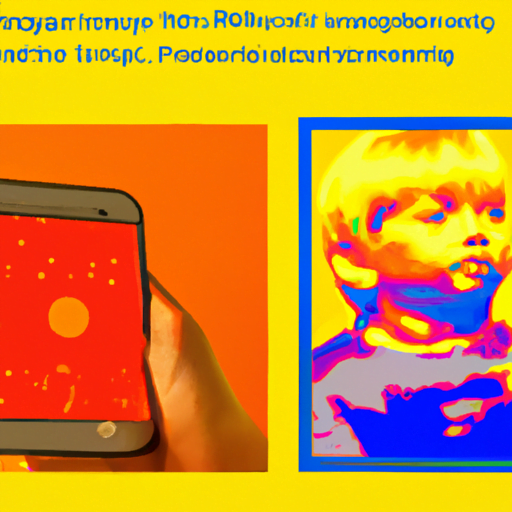
-
Table of Contents
- The Impact of Microinteractions on User Engagement
- What are Microinteractions?
- The Role of Microinteractions in User Engagement
- 1. Creating a Sense of Responsiveness
- 2. Enhancing Usability
- 3. Adding Delightful Moments
- Case Studies: The Impact of Microinteractions
- 1. Slack’s Emoji Reactions
- 2. Tinder’s Swipe Gesture
- Best Practices for Designing Microinteractions
- 1. Keep it Simple
- 2. Provide Meaningful Feedback
- 3. Use Consistent Visual Language
- 4. Test and Iterate
- Conclusion
The Impact of Microinteractions on User Engagement

Microinteractions are the small, subtle interactions that occur within a user interface. They may seem insignificant, but they play a crucial role in shaping the overall user experience. From the way a button changes color when clicked to the sound a notification makes, microinteractions have a profound impact on user engagement. In this article, we will explore the importance of microinteractions and how they can enhance user engagement.
What are Microinteractions?
Microinteractions are the tiny details that make up the larger user experience. They are the small animations, sounds, and visual cues that provide feedback and guide users through an interface. These interactions can be as simple as a loading spinner or as complex as a swipe gesture. Microinteractions are present in almost every digital product we use, from mobile apps to websites.
Microinteractions serve several purposes:
- Feedback: Microinteractions provide immediate feedback to users, letting them know that their actions have been recognized and understood by the system. For example, when a user clicks a button, a microinteraction can change the button’s color to indicate that it has been pressed.
- Guidance: Microinteractions guide users through an interface by providing visual cues and instructions. They help users understand how to interact with a product and what actions are available to them. For instance, a microinteraction can show a tooltip when a user hovers over a button, explaining its purpose.
- Delight: Microinteractions can add an element of delight to the user experience. They can surprise and engage users, making the interaction more enjoyable. For example, when a user successfully completes a task, a microinteraction can display a confetti animation to celebrate their achievement.
The Role of Microinteractions in User Engagement
Microinteractions have a significant impact on user engagement. They can make or break the overall user experience and determine whether users continue to interact with a product or abandon it. Here are some ways microinteractions influence user engagement:
1. Creating a Sense of Responsiveness
Microinteractions provide immediate feedback to users, creating a sense of responsiveness. When users see that their actions are recognized and understood by the system, they feel more engaged and in control. This responsiveness builds trust and encourages users to continue interacting with the product.
For example, consider a form validation microinteraction that displays an error message when a user enters invalid data. This immediate feedback helps users correct their mistakes and provides a sense of guidance, increasing their engagement with the form.
2. Enhancing Usability
Microinteractions play a crucial role in enhancing the usability of a product. They provide visual cues and instructions that guide users through an interface, making it easier for them to understand how to interact with the product.
Take the example of a progress bar microinteraction. When users see a progress bar filling up as they complete a task, it provides a clear indication of their progress and motivates them to continue. This visual feedback enhances the usability of the product and keeps users engaged.
3. Adding Delightful Moments
Microinteractions have the power to create delightful moments for users. These small surprises and animations can make the user experience more enjoyable and memorable.
Consider the Facebook “Like” button. When users click the button, it animates with a thumbs-up icon and displays a brief burst of confetti. This microinteraction adds a touch of delight to the user experience, making users more likely to engage with the platform and share their positive experiences with others.
Case Studies: The Impact of Microinteractions
Several case studies have demonstrated the positive impact of microinteractions on user engagement. Let’s explore a few examples:
1. Slack’s Emoji Reactions
Slack, a popular team communication tool, introduced emoji reactions as a microinteraction to enhance user engagement. Users can react to messages with emojis, providing quick feedback and adding a layer of interactivity to conversations.
According to Slack’s data, the introduction of emoji reactions led to a 10% increase in user engagement. Users felt more connected and engaged with the platform, leading to increased usage and retention rates.
2. Tinder’s Swipe Gesture
Tinder, a dating app, revolutionized the way users interact with potential matches by introducing the swipe gesture as a microinteraction. Users can swipe left or right to indicate their interest in a profile.
Research conducted by Tinder showed that the swipe gesture increased user engagement and satisfaction. Users found the gesture intuitive and enjoyable, leading to longer sessions and higher conversion rates.
Best Practices for Designing Microinteractions
When designing microinteractions, it is essential to follow best practices to ensure they have a positive impact on user engagement. Here are some guidelines to consider:
1. Keep it Simple
Microinteractions should be simple and easy to understand. Avoid overwhelming users with complex animations or interactions. Keep the focus on providing clear feedback and guidance.
2. Provide Meaningful Feedback
Ensure that microinteractions provide meaningful feedback to users. The feedback should be relevant to the user’s action and help them understand the outcome of their interaction.
3. Use Consistent Visual Language
Maintain a consistent visual language throughout the microinteractions in your product. This consistency helps users understand and predict how different interactions will behave.
4. Test and Iterate
Test your microinteractions with real users and gather feedback. Iterate on the design based on user insights to improve the overall user experience and engagement.
Conclusion
Microinteractions have a significant impact on user engagement. They provide feedback, guidance, and moments of delight that enhance the overall user experience. By creating a sense of responsiveness, enhancing usability, and adding delightful moments, microinteractions keep users engaged and encourage them to continue interacting with a product.
When designing microinteractions, it is crucial to follow best practices and consider the specific needs and preferences of your target audience. By incorporating well-designed microinteractions, you can create a more engaging and enjoyable user experience that sets your product apart from the competition.
